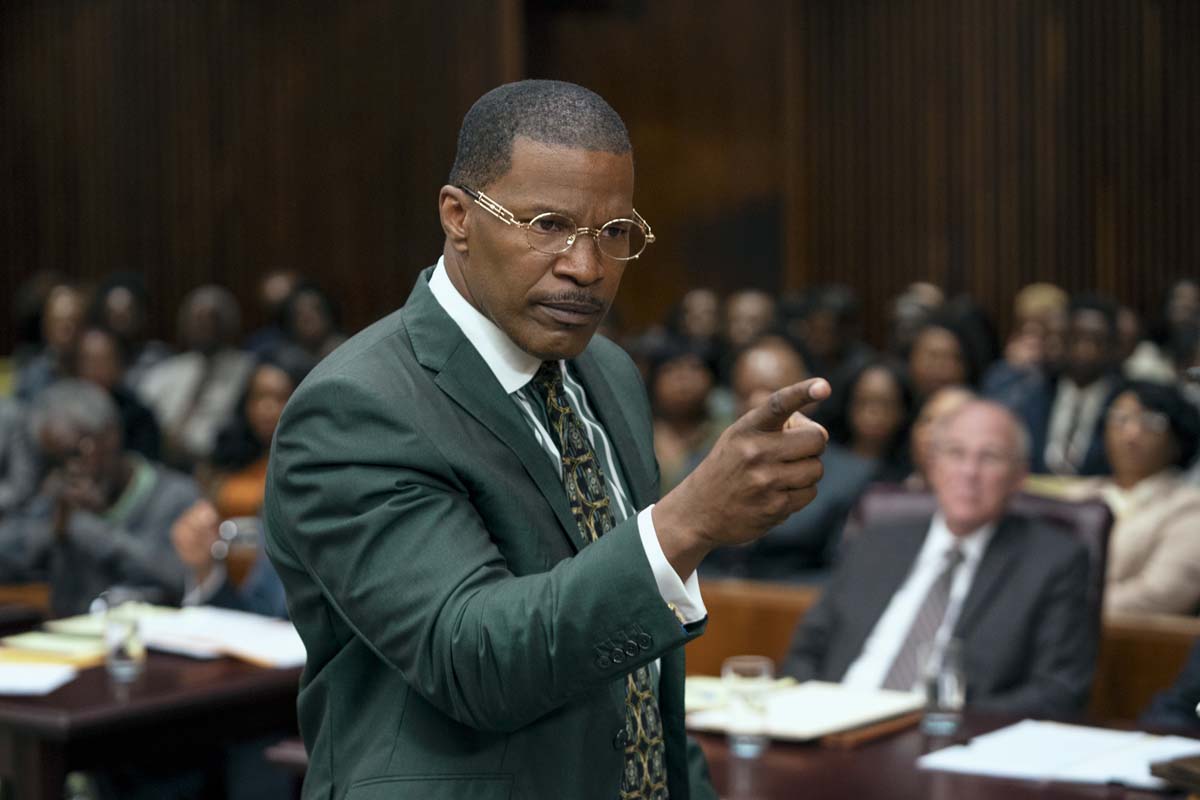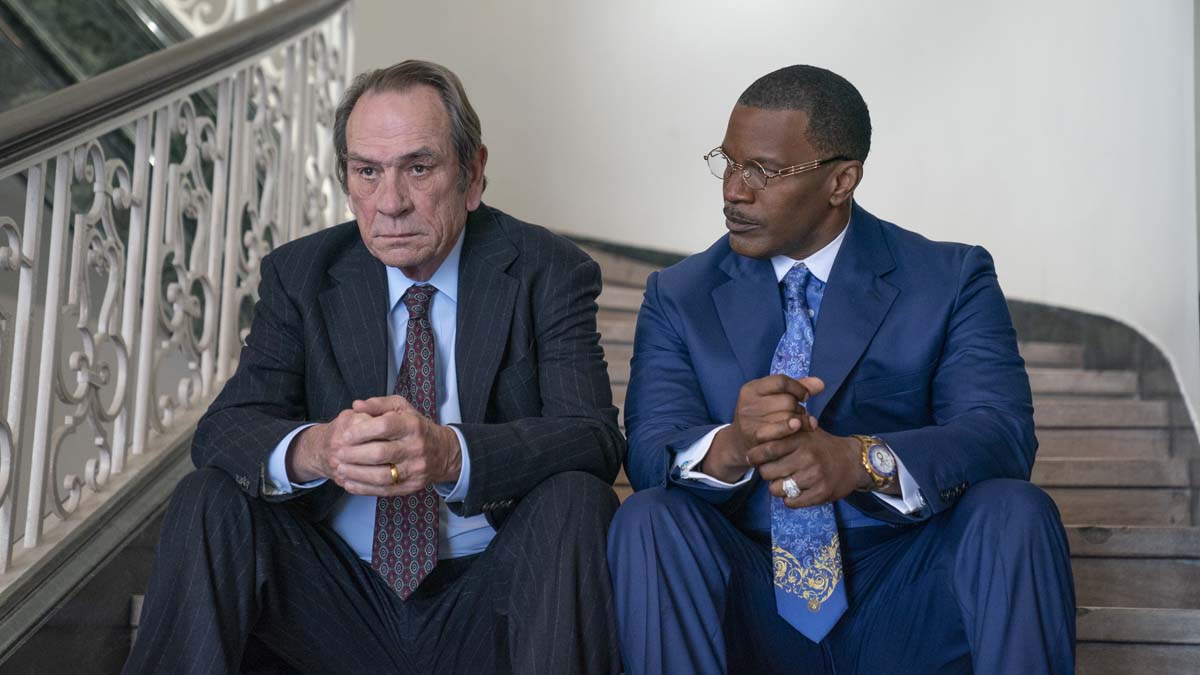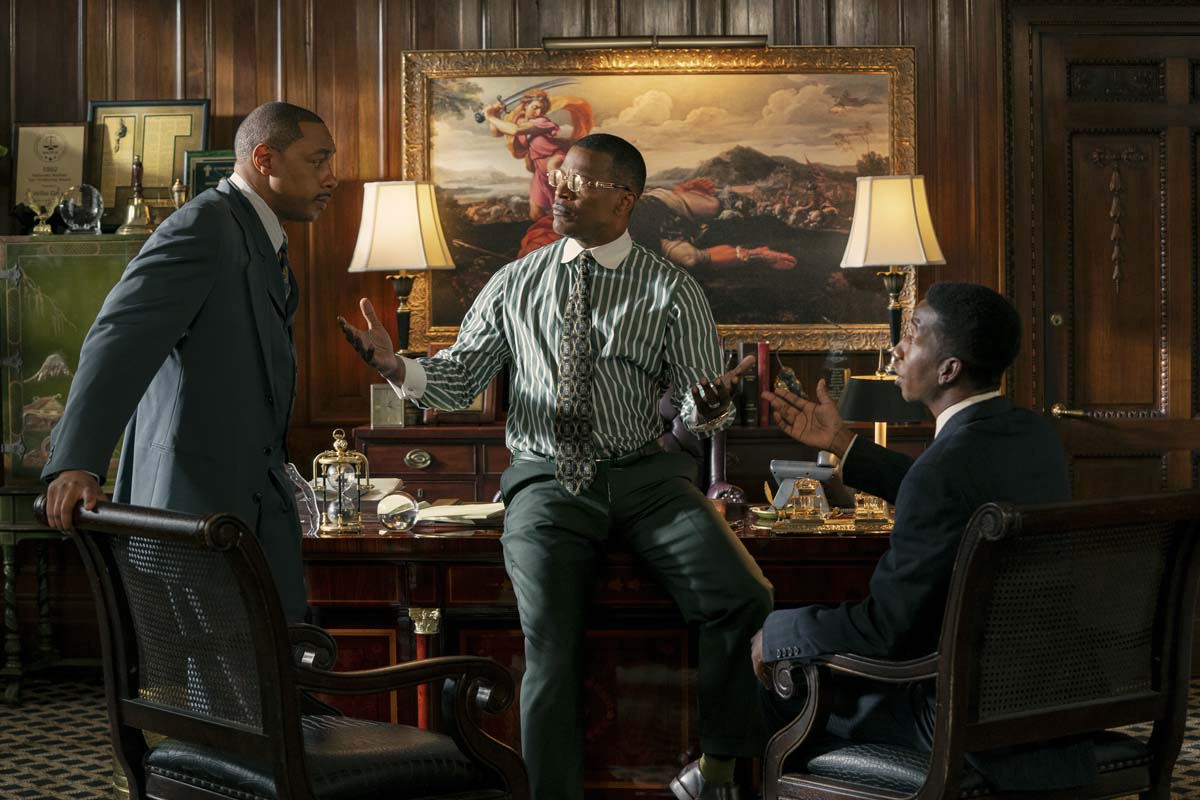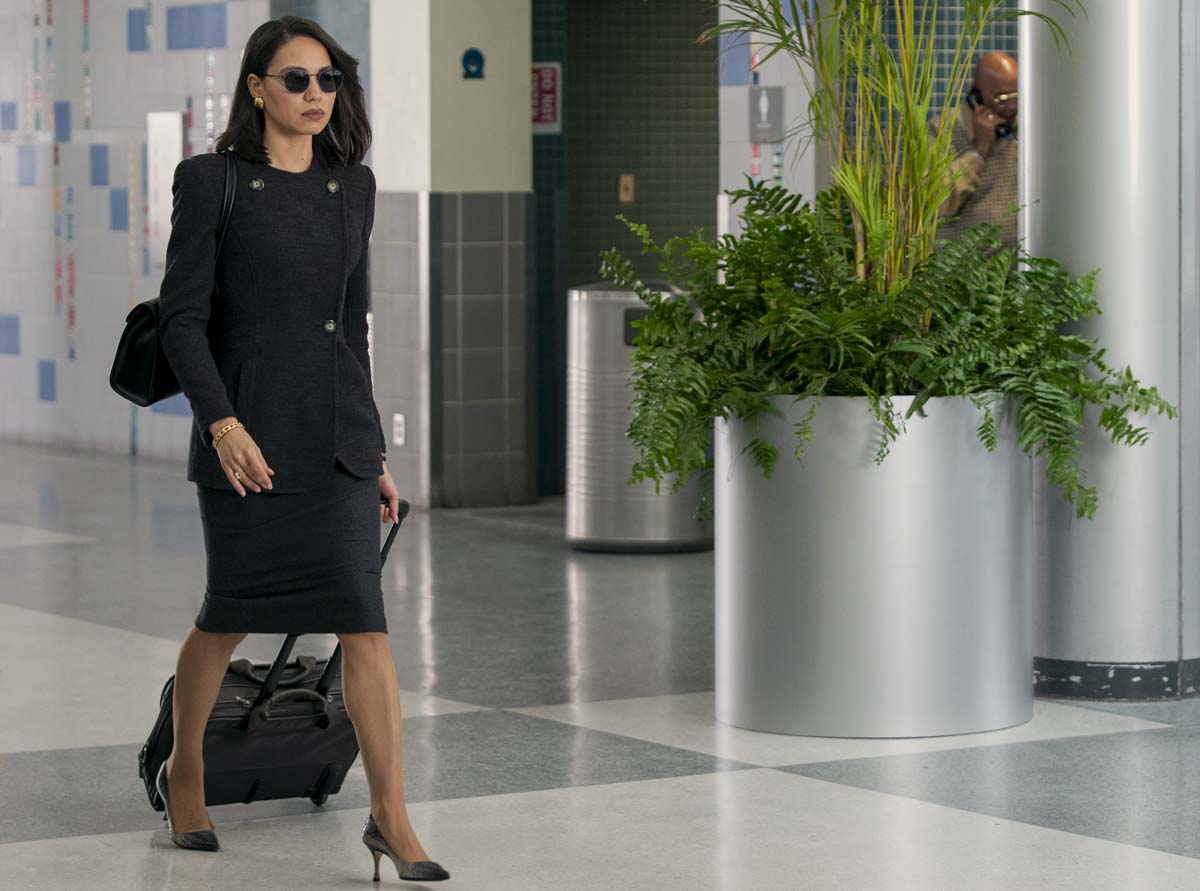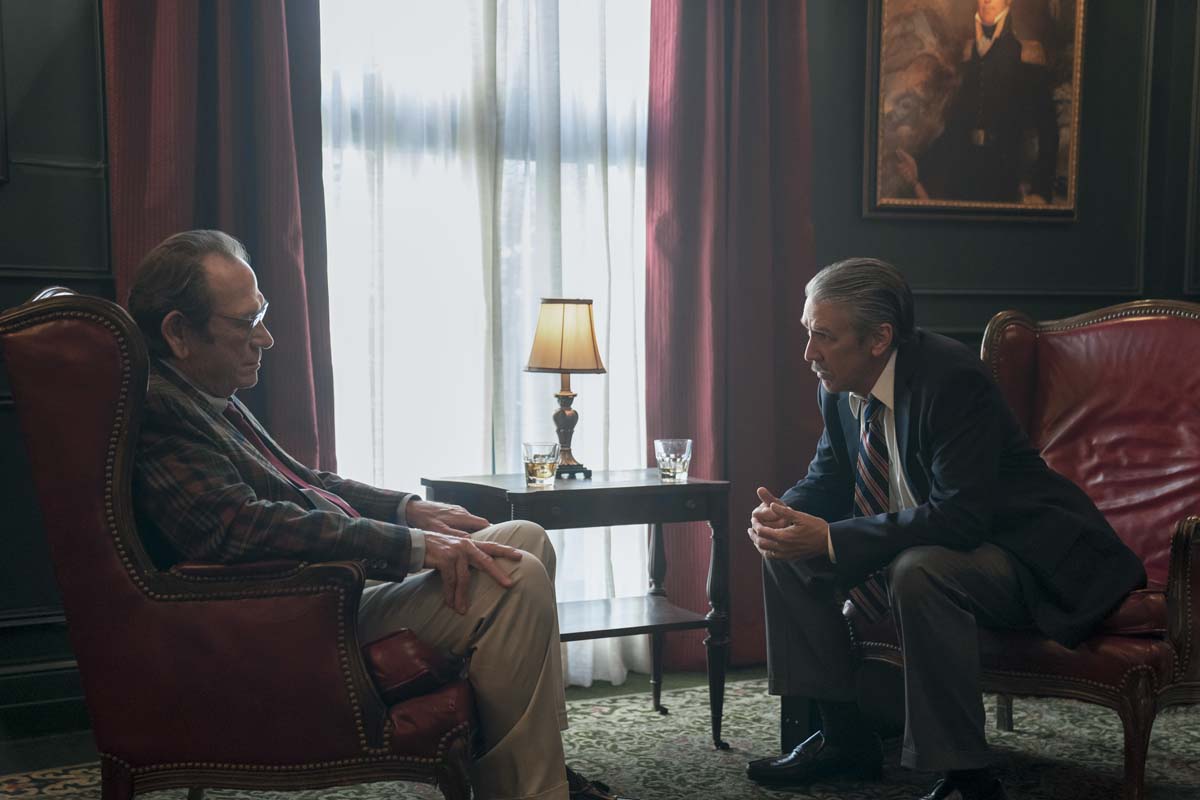Today on Art of the Cut, we speak with one of the editors of the movie The Burial. Edited by Lee Percy, ACE and Jay Cassidy, ACE - BOTH have been guests on Art of the Cut in the past. This time around, we spoke with Lee about his work on the film.
Lee previously spoke to Art of the Cut about his work on The Mountain Between Us. Lee won an ACE Eddie back in 1995 for his work on the film, Against the Wall. He won an Emmy for his work on Grey Gardens and another Eddie for the film, Taking Chance.
You trained as an actor. How has that informed your editing?
PERCY: It's been invaluable. I pursued acting from the time I was very young, and studied for many years. I ended up studying at Juilliard. I actually never really worked much because by the time I finished Juilliard, I'd figured out that I didn't want to be an actor — that it wasn't exactly the right career for me — and I wake up every day happy that I am not trying to be an actor. And I'm sure the profession itself has benefited a great deal from my absence, but it was enormously helpful. I finally decided that what I did want to do is filmmaking. I went to film school. I went to University of California at Santa Cruz. There I was able to pursue theater arts and film and liberal arts, which was all what I needed after being in conservatory situations for most of my post-secondary education. So that all served me well.
There are so many elements to drama, and that's what editing is all about, is really bringing the drama to the screen in the best way possible. And often it's finding everything that's in the footage, often — as you know only too well — taking an approach that may not be the one that was intended by the director and the writer or the actors, and finding that there's an even better way to bring those ideas to the screen, bring those ideas to life, and to really find what's in the footage, what happens on the set.
It's an old adage that a film is written three times: when it's written, when it's shot and when it's edited. For me, something happens on the set. There's an alchemy between the actors and the director. The camera's like the Philosopher's Stone and what comes out in the editing room is something completely different than the various elements that were pre-synthesis — when they were all on the set together. It's really about getting into the footage and finding what's there. So because I have an actor's sense of things, the first thing I do is I look for magical moments in the performance and I mine those. I tend to make a list of the really great moments of each actor's performance in each scene. It's kind of like my ultimate wish list. You can't always use all that. You can't really build a scene out of just the best moments. You can’t even build a performance out of that because it isn't consistent and it wouldn't be believable. But I have those there at the top of the screen, as it were, for me to grab as many as I can and see how to work them into the scene. As I proceed with putting the scene together, there are a lot of other elements that are as important, but the acting is really the first thing that I like to look at.
This is the time of year when we're seeing the Oscar campaigns and we're being invited to a lot of screenings. Some of the movies I've seen, they're able to stay on an actor — stay on a performance that's remarkable. And that's something that I have often struggled to achieve. I just saw Killers of the Flower Moon, and I was talking to Thelma Schoonmaker and I said, “I really admired a couple of places in the film where they really just stayed on one performance.” And you can't always do that and you don't get that opportunity very often. Sometimes you don't get that opportunity at all in an entire movie, and that's fine. Actors are not expected to produce that regularly. It's more of a miraculous thing when it happens. So to preserve that to me is really wonderful. And there have been times — and without naming the movie — I can just remember a key scene that involved three actors and it was a huge turning point for one actress and they started in a three shot, and it's a very long, slow push-in where you see the other two actors behaving and the actress reacting to what's happening. And she kind of goes from laughing and thinking it's really funny and really fun. At the end, you realize that she's being left out and it’s almost a catastrophic moment for her — all in the course of maybe a two minute long push into her face. I thought it was a spectacular moment and told the whole story of the scene. And, like I said, it was an essential turning point in the movie and the life of the characters. And they made us cut it up. And I fought and fought. And finally the director gave up and he was a stage director, so he knew his acting. And I figured if he wasn't going to fight for it, I wasn't going to fight everyone.
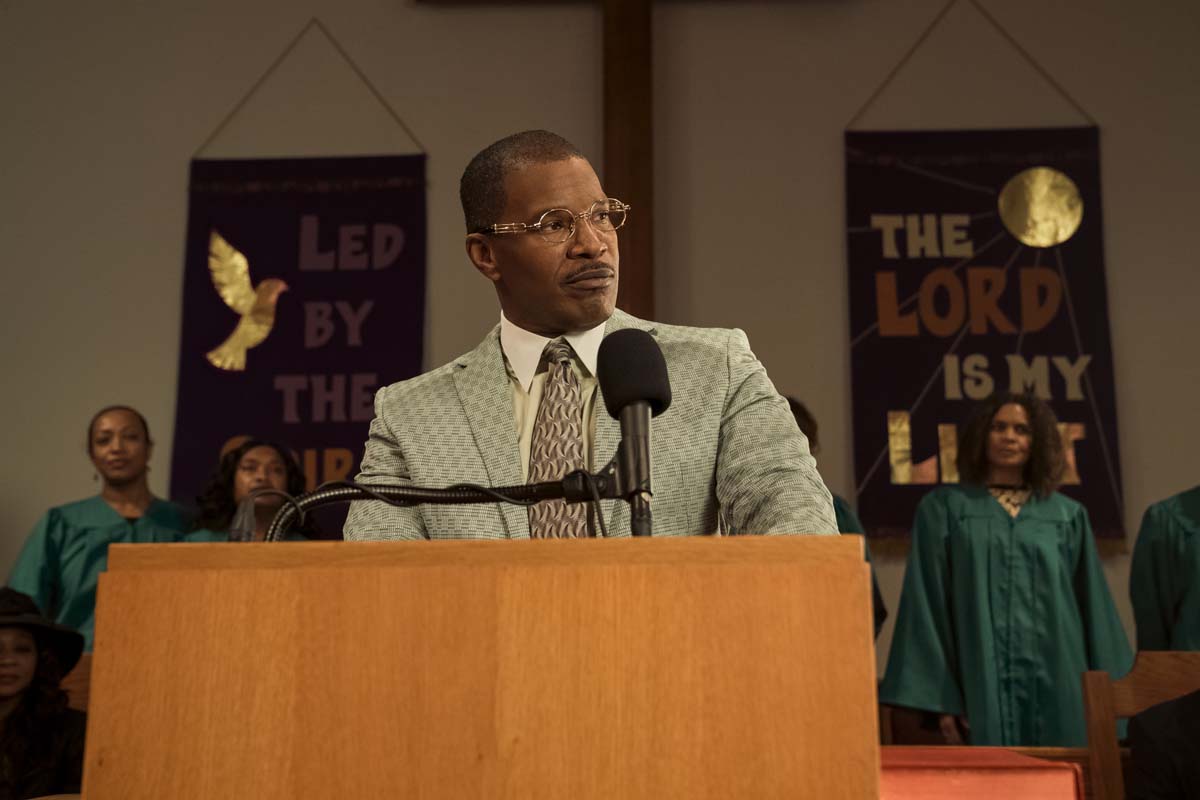
I also just saw Maestro and I felt there were also places in that where they chose to stay — particularly in a couple of arguments — very wide and very distant. I don't know that I would have stayed wide that long, but I thought it was really a bold choice. To play the argument all in one take gave it a reality that I think even if the audience isn't paying attention to the fact that it's all in one take, I think the truth of the performances and the reality of the scene is something that you just perceive.
Acting to me, it's not the only element I focus on, but it is probably the first thing that I look at and it is something that I treasure. And I think it's something that if you talk to directors I've worked with, they really respect my opinion when it comes to: let's pick out these performances or let's work our way through each character in a scene and what performance pieces we're using, and when we’re on them and when we're on the reactions and how we get absolutely everything the actors gave us that's currently on the drive onto the screen.
One of the things that you mentioned in describing your approach to finding those performances and kind of harvesting them is: you said you put them along the top of the screen. Are you clipping things out and putting them above your takes and setups or what are you doing there?
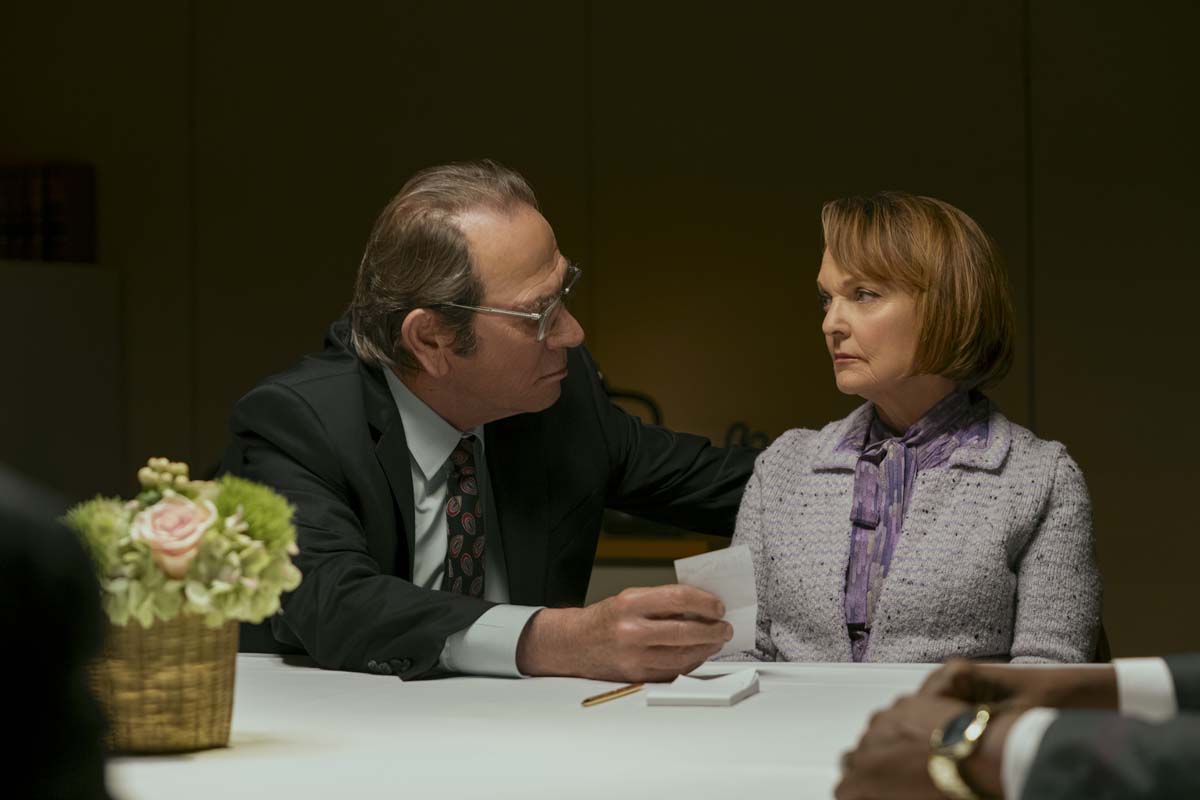
That was really more of a metaphor, the top of my head or in a separate trim bin, hanging the clips on the hooks, right, Steve?
I think there's more modern ways to do this, but I still go through dailies and take notes on a legal pad. So to really tell you how I do it: on the legal pad I will put time codes. So usually I'll have the slate and then I'll note lines that are good or reactions that are good. And with the reactions, I especially use the time codes. I think there's probably more computer savvy and scientific ways that people do that now, but I'm still writing things down. I put a little star next to what I think is a key moment. And when I finish editing a scene, I'll go back through my notes and just run through those starred moments and see if — in the course of editing the scene — I selected a different piece of the take or chose not to use the reaction or chose to be on the reaction rather than the line and go back into the dailies and compare it with the piece that I starred and then kind of A/B them.
Sometimes when you watch dailies, you see things that you think are really great and then you start to put the scene together, and you realize that even though they look great in dailies, they actually don't work that well in the scene either in concert with what the other actors are doing or with what the scene needs, or maybe they stand out too much. So a lot of times the things I've starred I go back and look at them and say, “Well, I know I liked that, because it's really fun acting, but in terms of telling the story or developing the essential conflict of the scene, it's just not quite right.”
Do you have any advice for actors coming from the editing room, things that they might want to know about how their performance is used in the editing room?
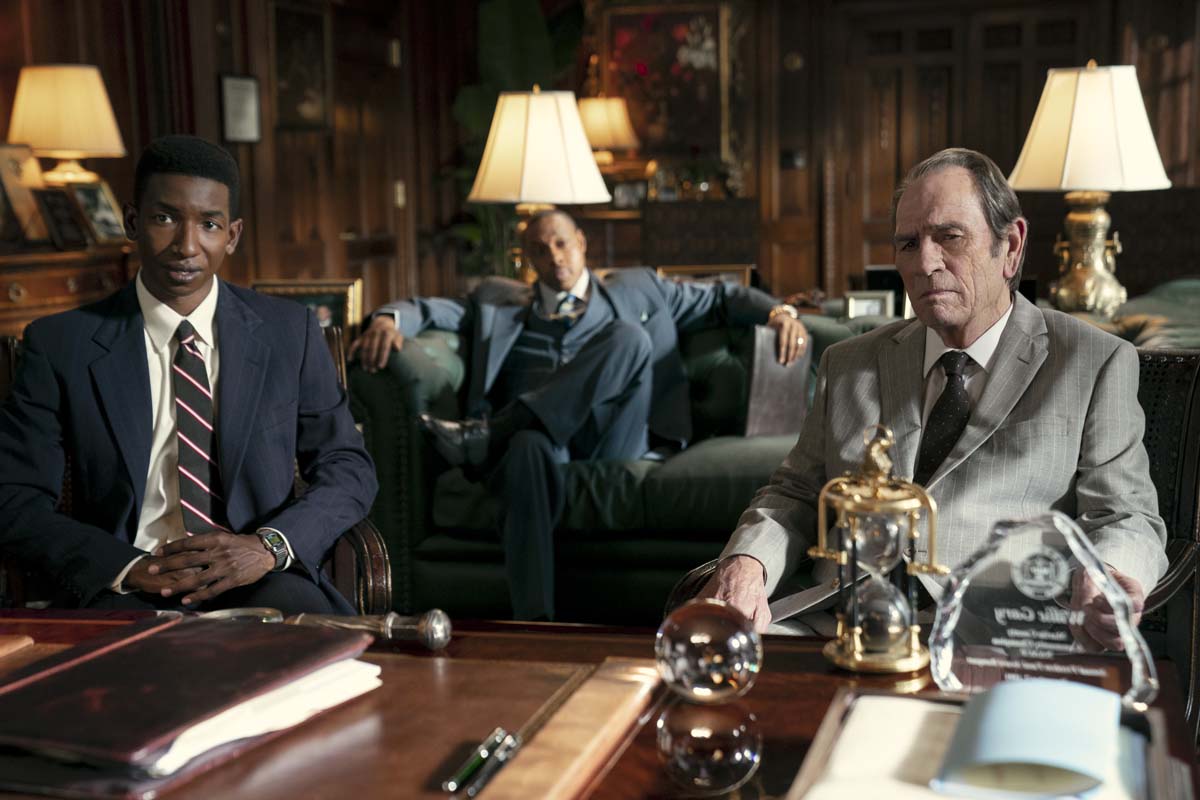
That's a great question, Steve, because I think the more actors know about editing, the better off they will be. I’ve worked with some actors who come into ADR — of course, actors don't generally like ADR, which is funny because most of them are really good at ADR — and nine times out of ten we get the line as good or better than we got it on the set. And most times we're doing ADR for technical reasons and not for their performance unless we're changing an accent or something. And a lot of times actors come in and we spend a lot of time arguing about: “I can't do that line again.” “You don’t need that line.” “What's the problem?” “Why are you asking me to do this?” One actress came in: we're doing ADR and the recordist from the mic in the booth said, “Can you take those boots off? Because they're squeaking.” And she said, “You know, they keep saying that every time I wear these boots to ADR.”
Why does she wear them, then?
Exactly. We did ADR with Jeremy Irons on Reversal of Fortune. You know, there was some lines he wanted to do because he was perfecting the accent for the the Claus von Bulow character. He sort of found the right accent for him in the beginning of shooting, so he wanted to go back and fix some of the early stuff. And then every time we played a line for him on the ADR stage, he never asked, “Why are we doing this?” Or “Can't you get it somewhere else” or anything like that? He would always look at the line and say, “Okay, I can do that better,” even if it was totally for technical reasons and would just jump right in with both feet and his mind, if you will, and do a great job. I still remember to this day working with him because it really was very professional and a pleasure for all of us.
I also think of differences in temperature for an actor: how much they experiment or how much they trust that their performance will be used correctly in editing, that kind of thing.
I think it's really important for them to understand what goes on in editing, because I think a lot of times they feel like they did a good take and we should use all of the performance from that take. And that doesn't always work for the scene and that doesn't always work for their performance. Once you cut your one really good, take all the way through the scene, it doesn't play as well as what we're using. I think a lot of actors don't realize that I am their partner, I'm their collaborator, and that I'm working really closely with them and I'm watching everything they do. I learn their habits. I learn their vocal attack. I know when something sounds the same and I don't want to keep using it because I want to vary their performance to make them sound real or when they've done something brilliant that I want to protect, but I'm their collaborator. So I think it's very helpful for the actors to understand that the editor is their collaborator and can work very closely with them, because I think sometimes when they see their performance cut up or things cut out, they feel like we're working at cross-purposes. And that certainly has never been my intent or my experience.
The other thing to think about: you've got a great performance as an actor. You know you nailed a scene the way you want to nail it, but then what you don't realize is that the scene before that or the scene after that might be cut out of the movie, and you're expecting that that scene has played, but now it doesn't exist anymore, so now your performance is different and so now the editor needs a different performance to make the movie work.

Exactly right. Exactly right. It's such a plastic process and it's constantly evolving. And even directors and producers — some of them — don't completely understand the complexities of editing: that it's like editing a book that we move chapters around, we move scenes around, we take lines out.
You write a screenplay to get the film made, to get it financed, to get actors excited, get people involved. A lot of that dialog, once you have the person's face there, you don't need the line. So a lot of the dialog we can take out, it's one of the things I search for early on is where are the lines that I can just get rid of? And it's on the actor's faces and it's in the silent moments or it's happening between two people or four people.
I, in my first cut, will start taking unnecessary lines out: things I think we don't need, things I think that are miscues, things I think that are overstating it.
I think young directors expect to see everything there in the first cut. I say to people, “You get a very opinionated first cut from me.”
I was walking up Park Avenue and I ran into one of the Fellows who'd been at Sundance — a directing Fellow — when I was an advisor there, and he was very happy to see me and we had a little chat. He said, “I'm making a film, but the editor is so deep into the cut, and I really just want to see it put together exactly the way I shot it.” Then I let him have it about how you work with an editor, and you're not editing the screenplay, you're editing the movie that you shot, and he got about a ten minute lecture on Park Avenue. I'm sure he was sorry he ever came up and said hello.
There are definitely people that agree with you and there are other people that say, “No, you always deliver the screenplay in your first cut and let the director decide.” That’s what I love about this series of interviews is there's no single way to cut a movie or to approach the process.
I don't really want to show them something that I know doesn't work. I want to show them something I think is really cool. Sometimes we go back and I say, “Oh yeah, I see why you did that.”
Different directors tell their editors, “Do what you want! Cut stuff out! Show me the best edit you can show me!” And some of them say, “Show me what I shot.”
There also are times, Steve, I have to say when there's something that I know is particularly precious to the director and I realize it's an argument I don't have to have and I can just leave it in and I don't have to even open my big mouth and say, “I don't think this scene works” because I know someone else is going to say it and I can be the final nail in the coffin of that scene rather than having come out of the gate saying, “We should get rid of that scene” from the very first day.
I saw in your bio on IMDb that it might be in the works for you to direct. How do you think your years in the edit chair prepare you for the director's chair?
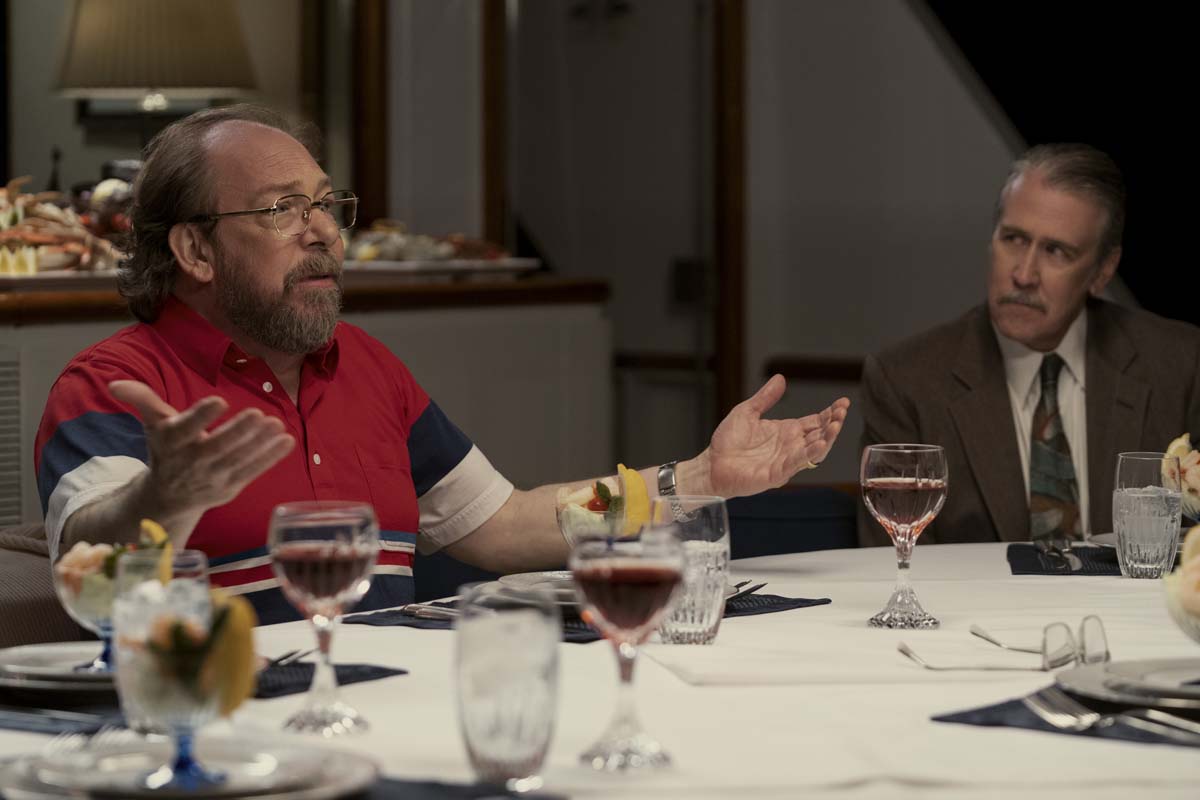
I have done a short that we were trying to make into a feature and now I'm working on a screenplay — an adaptation of a book with some people that I think is really, really good.
The wisdom actually used to be that editing was the best preparation for being a director, and certainly we can think of Robert Wise and Hal Ashby…
David Lean.
David Lean. Martin Scorsese, to some degree started out editing. So I think that's true. When I was shooting the short, I had a couple of creative producers who would stand next to me at the monitor and were very helpful. I was shooting a dialog scene — we were under time pressure, big surprise — and I'm getting the closeups on one side and close ups on the other — one camera — and I would say, “Okay, we can go on to the other side.” And they'd say, “Well, you didn't get everything.” I said, “I know, but I got all the pieces.” I didn't get a take where I got everything, but I know everything I need is in the five takes that we did and now we can move on. So I think in terms of being able to keep the set moving and visualize exactly what you need or know when you don't, you know or know when something really is missing in a big way. I think that is a real help.
I think I'm very supportive of the actors and I think I give the actors room, I give the actors encouragement and I give them strong direction: partly from my acting background, but I think also partly from knowing what it will look like once we get it in the Avid and once we get it on screen.
Maggie Betts is a new director for you — or you're a new editor for her — how did that relationship happen?
I had done a series of fine cuts for Trudie Styler and Celine Rattray. They were brought on by Maggie to produce a film she was making for HBO, which was called Days of Abandonment, based on the novel by Elena Ferrante, and it starred Natalie Portman. Natalie Portman at the time was doing Thor shooting in Australia. So they moved the whole production to Australia. It was during Covid. So I stayed at my house in Palm Springs — in Rancho Mirage — and they all went off to Australia. I met with Maggie, then on Zoom. We had a nice conversation. Because I came highly recommended by Trudy and Celine, she went ahead and hired me. Well, they went all through pre-production. The day before we started principal photography, an email came to everyone that said Natalie Portman has separated from the movie for personal reasons. Maggie and Celine and everybody scrambled for about a week to see if there was an easy way to replace that role that close to production, but they couldn’t, so they shut the movie down and that was the end of that.
Netflix got in touch with her about a project they had called The Burial, that was based on a New Yorker article. The actual case had occurred in 1990. And this had been kind of kicking around for a while. They finally had a screenplay that seemed like it worked. So Maggie jumped into that. In very short order she came up with a draft and a half, really did a draft and then notes and another draft. And so she brought me and a lot of her people from Days of Abandonment along on the new project. So we had worked together before, but only for a couple of weeks on a film that was never made. And then we were shooting — and again, because it was still during Covid, I was working remotely — they were shooting in New Orleans. We didn't talk a lot during production. There were a few times that she called about things, but mostly I put my cut together and then we reunited in New York and started working together.
Was the structure of this film pretty straightforward? Did you diverge from the script as you saw the film in context?
We diverged from the script. I think very seldom do movies maintain the structure of the screenplay. I remember, as far back as when was editing Reversal of Fortune — which was another film based on a legal case — It had built into it a series of flashbacks, and it had a Rashomon like quality where you saw the same event from different people's points of view. So, when we were editing that, I remember just as I was starting the editing, people would say, “Well, this should be easy because there's no way to change it. It all has to be in this sequence and in this order.” Then Barbet Schroeder, the director, and I, spent the next six months changing it all over the place. We did a lot of moving things around and experimenting and taking scenes out and putting scenes in.
Maggie is very detail oriented and very much into the performances, so we really got down into the nitty gritty of scene work as well as the overall structure of the film.
And is she the kind of director that likes to sit with you or does she drop in and give you some notes and leave?
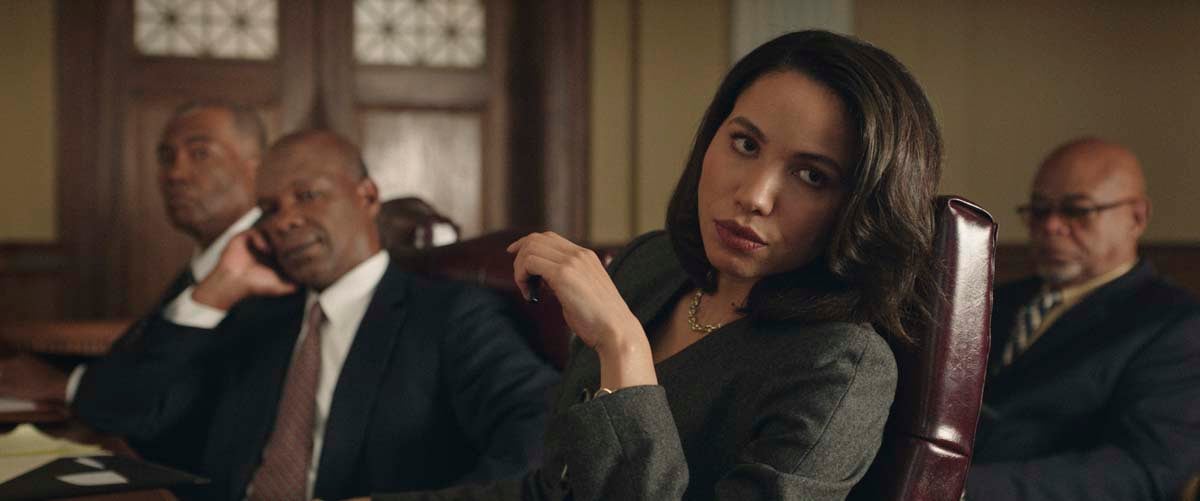
She likes to sit in there. There was a period when she had to be out of the country, actually. So we did a lot of work, and then she went away and she sent some thoughts from afar and we would send her cuts via the Internet. That was okay. It wasn't as successful as when she was in the room because I think she just feels more comfortable. She's a lovely person. We really had fun, but she needs to see it happen. She's from documentaries and that's a very different way of working. And so she would go home and I would get notes and she would say, “This reel at this timecode…” which was fine because she'd be very specific, so I could put things together for us to look at when she came in. But, that's not how we talk in features. It's: “Scene 45, take three this line.” It was fine the way she did it, but she was using a documentary parlance. So it was interesting. But she would go home at night and spend hours and hours going through the footage.
She didn't watch dailies while we were shooting. She didn't watch dailies. She didn't look at cuts. Didn't talk about the editing. She only focused on each day’s shooting so she could concentrate and focus on what she was shooting. So then while we were editing, she would go home at night and really dive into the dailies for the next few days’ material and take these very kind of specific notes: “This reel that timecode.”
We worked from my cut, but then I could go through and pull out the material that she found in the dailies. We could A/B it, I could put a sequence together, we could compare it. It was constantly evolving. So we did change the overall structure of the film. We changed the structure of the scenes and we changed the way the scenes played, and we did that continuously, continuously evolving. So we would do things and then go back and change them. Even after we said, “Okay, well that looks really good.” we’d go back two days later and go, “Well, let's see what else we can do here.” It was an intense process.
Can you think of an example of why something in the structure had to change, even if it's just one thing? Why did a scene come out or why did a scene come out and then why did it go back in? Or why did something have to get rearranged?
The film becomes, to some degree, a courtroom drama. And I hate to put that moniker on it because it's not completely that genre at all, but there is a court case that becomes a backbone starting at the second act midway through. The way that that unrolls in relationship to the conflict between the two attorneys and the client. And the Jamie Fox character is a real character. He's constantly kind of bouncing up against the system, and Tommy Lee Jones, who's his client, and Jurnee Smollett, who is the attorney for this big corporation they're going up against. So all of these things have to be balanced in a way so that it unrolls in an interesting fashion and intercut with all that, they're finding out things about this case, which has a relationship to the way that African Americans in these poor communities in the South are being treated. So all of those outside elements inform what's happening in the court. All of that had to be very carefully orchestrated so that we were able to clearly allow those scenes to unroll and lead the audience through the drama in the best way possible.
And then we would find we could really restructure the courtroom scene based on that and who you see, who's listening, who's speaking? Are we on Tommy Lee Jones’ wife or do we just stay on him in the witness stand while he's under a very difficult cross where information is coming out about him that's affecting the reactions of his family. So all of that made it very complicated in a way that's challenging and fascinating, not in a way that was a problem or an issue because as I said, we had a lot of material. It’s just making sure that we found the best way to lead the audience through it.
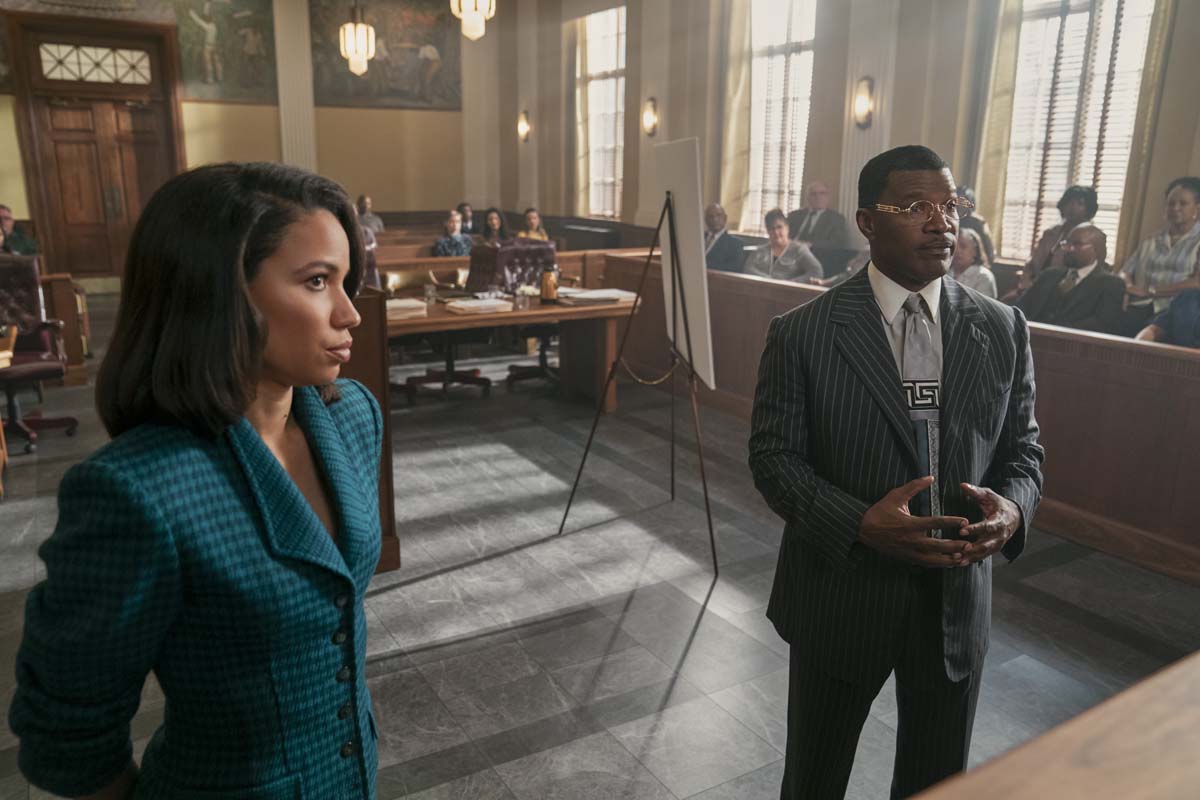
You just mentioned that you've got Jamie Foxx, who's this real character, and then you've got the Tommy Lee Jones character. They seem to be running very different temperatures, as they should. They've got their own personality. Tommy Lee was very cool, very dry, and Jamie Foxx is on fire. So how is that to edit those two characters when you're going either back and forth between scenes between them or when they're in the same scene? Is it great to have that or is it a challenge because they're so different from each other?
In a way it's a challenge because they're so different from each other, but also that enhances the dramatic tension of the scene. So that silence and the anchored quality of his character gives him a gravitas because he is the one that the Jamie Foxx character is working for. And the Jamie Foxx character is a lot of fun because he's so extreme. He's so “who he is” in a big way. And it's really fun to watch. And then as the film goes on, he has a little bit of an epiphany and he realizes how important this situation is and how people's lives are affected by the case that he's arguing. So it goes from being kind of funny because he's all about the money to being more serious, because it's really about the people that are being affected by this case.
There’s a scene in the airplane where he asks him why he's such a fighter and Tommy Lee’s character explains why he's bringing the case.
Yeah, that's a great scene. They were really good together. Jamie is always on, so between takes, he's entertaining the extras. We had some great outtakes for the gag reel, so he's very entertaining. He's very on. And again, Tommy Lee is excellent, but he's serious. He gets there. He does what he needs to do. He does it really well, and then that's it. They're very different in their temperature, but they worked really well together, and I think that difference between the two of them enhanced the dramatic tension and their scenes together.
Lee, you've won multiple ACE Eddies and Emmys. How do you judge the editing of others?
Maybe it's the actor in me, but I am a total audience, so when I'm watching something, I'm sucked into the drama and I don't notice the editing or the filmmaking or the directing or the acting. I'm just there. I'm totally involved. And if I'm watching the editing, then the movie isn't working. So when I see something where I sense that the filmmaking is remarkable, I have to go back and watch it a second — or if it's a really good — a third time.
I came to editing through total serendipity. There's a man named Noel Marshall and he had been the executive producer of The Exorcist, which at that time was the top grossing film in the history of American movies. So he did a kind of a personal film, where he built a huge Swiss family Robinson-type set up in the Soledad Canyon up north of Palmdale and had 120 big cats. And he made this kind of African adventure movie (Roar, 1981) that he starred in. He wrote it. He starred in it. He produced it. He directed it. And it costarred his wife, Tippi Hedren, and her then unknown daughter, Melanie Griffith. I had just gotten out of film school. I didn't have any money. A friend of mine was (cinematographer) Jan De Bont’s assistant, and they're all living up there in Soledad Canyon in trailers. So he's trying to get all his friends from film school hired on this movie because he was in the middle of nowhere, right? So he wanted us all to suffer with him.
So he got me hired as an assistant editor. I was going to be in the camera department. I was going to be a director. I didn't really have much of a thought about a career in editing. Because Noel had made The Exorcist, he got deferments from Panavision, from Metro Color, from MGM Laboratories, from Eastman for film stock, and he printed 1.2 million feet of film, because there was no governor on what he did.
That's like Apocalypse Now levels.
Yes. We got a letter from Roger Mayer at MGM saying it was the most film they'd ever processed on a movie. So the editors — Larry Carroll and Ted Nicholaou — looked around one day and saw all this film and said, “We'll never get out of here.” And they turned to me and they said, “You went to film school. You start editing.” And there I was, two weeks an assistant and then an editor. And it really turned out to be serendipitous because it was exactly the right profession for me: utilized my acting, my sense of drama that I think actors have. I just started renting — in those days, video cassettes — and watching movies edited by Tom Roth was a particular favorite of mine, and I’d just go slowly through: where does he cut? Why does he cut? Why does he cut here? And why did he go to the wide shot here? And why did he go to the reaction here?
Instead of being someone's assistant for ten, fifteen years and hanging trims on the hook I was very lucky. I was an editor right away. I just had to kind of do a little quick study of how you really go about doing it.
I'm going to get back to your approach and I reread our interview from from the Mountain Between Us, and you said you don't use select reels, you go to the bin with thumbnails of your setups and takes and you choose from that. Why do you eschew the use of selects?
I worry that they limit me. I do do dailies rolls. When I'm editing, I'll still go back to thumbnails, but when I'm starting out I have them all put together without the slates — sometimes with the slates — in what would have been a KEM roll back in the day so that it's easier to go through and look at everything.
I worry that with selects rolls I might miss something because when you run back and forth through things — and it's probably the only thing that I miss about editing on film — is high-speeding back and forth because somehow, even at high speed, 120 frames a second, your brain would record what's zipping past. And you might remember later, “Oh, there is that something there.” But I find that if I go into the takes and I'm running back and forth, I'll see things. A lot of times, even though I've taken notes, I'll go back through and I'll go over lines over and over and over and over again. So I do use Avid ScriptSync when I have a film with enough of a budget that we can get the help, because that's a full time job. One person has to be doing ScriptSync only during dailies, and if we have that budget and I can get it approved and they're willing to buy the software…
I don't use it when I'm editing or when I'm doing the first cut. I still want to be into the dailies so the assistant can be putting that together. It doesn't have to be done until the end of the editor’s cut. And then when the director comes in, even though she'd go back and take notes on the dailies when she wanted to look at performances, we could open the ScriptSync and just go, click, click, click, click, click and look at the seven performances of that line. A lot of times we still would go back into a take because all the times we're looking for reactions and enhancements. I think we did some work to bring those characters forward by finding quiet moments throughout their takes, especially Tommy Lee, because as you say, he is a quieter character. So we really went in and wanted to find the moments where you can get inside him because even though he's a quieter character, he is the person you have to connect to to get the emotional connection of the movie.
Thank you so much for joining me and talking about this movie and your process.
Great speaking with you.








